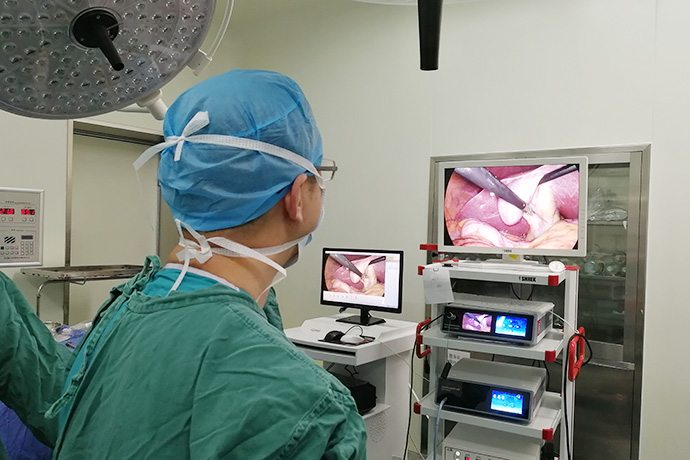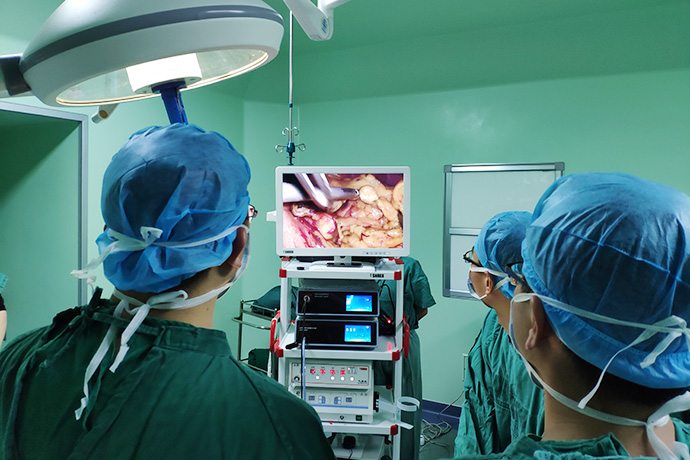Laparoscopy Exploration
Release time: 18 Mar 2020 Author:Shrek
[Laparoscopy] Laparoscopy Exploration
When it is difficult to make a diagnosis through laboratory examinations and a variety of imaging diagnostic techniques, laparoscopy shows its unique and accurate diagnostic function, which can make up for the lack of laboratory examinations and imaging examinations. Laparoscopic exploration has fewer complications and less pain. It can not only directly observe normal organs and diseased tissues, but also biopsy under direct vision, obtain evidence of disease examination, accurate assessment by surgeons, and assist in treatment. The latter is diagnosed for the disease, and surgical treatment is immediately feasible. Most of them replaced the previous exploratory laparotomy, and tried to avoid blind laparotomy. In terms of diagnosis, it is used in the diagnosis of abdominal trauma, hepatitis, tuberculosis, ascites, abdominal mass, abdominal metastasis, and liver cancer. For tumor staging and intra-abdominal malignant tumors, the preoperative laparoscopic staging is accurate, which can avoid unnecessary laparotomy.

Laparoscopic surgery is what we often call "punch" surgery. In fact, laparoscopy is not only used for surgery. Laparoscopy in the field of surgery has the following three characteristics at the same time: that is, it can be used for diagnosis and treatment with laparoscopy, and it has the characteristics of minimally invasive. Laparoscopy is almost omnipresent. More than 95% of abdominal and pelvic organs can be operated under laparoscopy. Laparoscopy extends the surgeon’s sight into the abdominal cavity without opening the abdominal cavity. Under laparoscopy, the various organs in the abdominal cavity can be clearly enlarged, and various lesions on the surface can be clearly seen, and what you see is saved by computer image.
Why should laparoscopic exploration be performed? cause
Laparoscopic exploration can make up for the shortcomings of traditional imaging examination, and provide reliable basis for further clinical diagnosis. In the diagnosis of many difficult and miscellaneous diseases in abdominal surgery, such as unknown acute and chronic abdominal pain, the accuracy rate of laparoscopic diagnosis is much higher than that of B-ultrasound and CT, so as to avoid the delay caused by unknown diagnosis.Not only that, once the diagnosis of diagnostic laparoscopy is clear, most diseases can be cured directly under laparoscopy. More importantly, it is a minimally invasive surgery that only causes minor trauma to the patient.

General laparoscopic diagnosis
Indications
Diagnosis of unexplained acute and chronic abdominal pain
Detection of abdominal injuries
Staging of abdominal malignancies
Biopsy and differential diagnosis of liver disease
Differential diagnosis of ascites
Diagnosis of gynecological infertility
Contraindications
Severe cardiopulmonary dysfunction
Hemodynamic instability
Difficult to correct coagulation dysfunction
Severe liver dysfunction or large amounts of ascites
Severe infection in the abdominal wall and in the abdominal cavity
Multiple abdominal surgery is estimated to be extensive adhesions in the abdominal cavity
Larger hiatal hernia
Diaphragm rupture
Mechanical or paralytic intestinal obstruction
- Recommended news
- 【General Surgery Laparoscopy】Cholecystectomy
- Surgery Steps of Hysteroscopy for Intrauterine Adhesion
- [Gynecological Hysteroscopy] Techniques for Preventing and Treating Complications of Hysteroscopic Surgery
- [Gynecological Hysteroscopy] Hysteroscopic Adhesiolysis
- [Gynecological Hysteroscopy] IUD Removal under Hysteroscopy